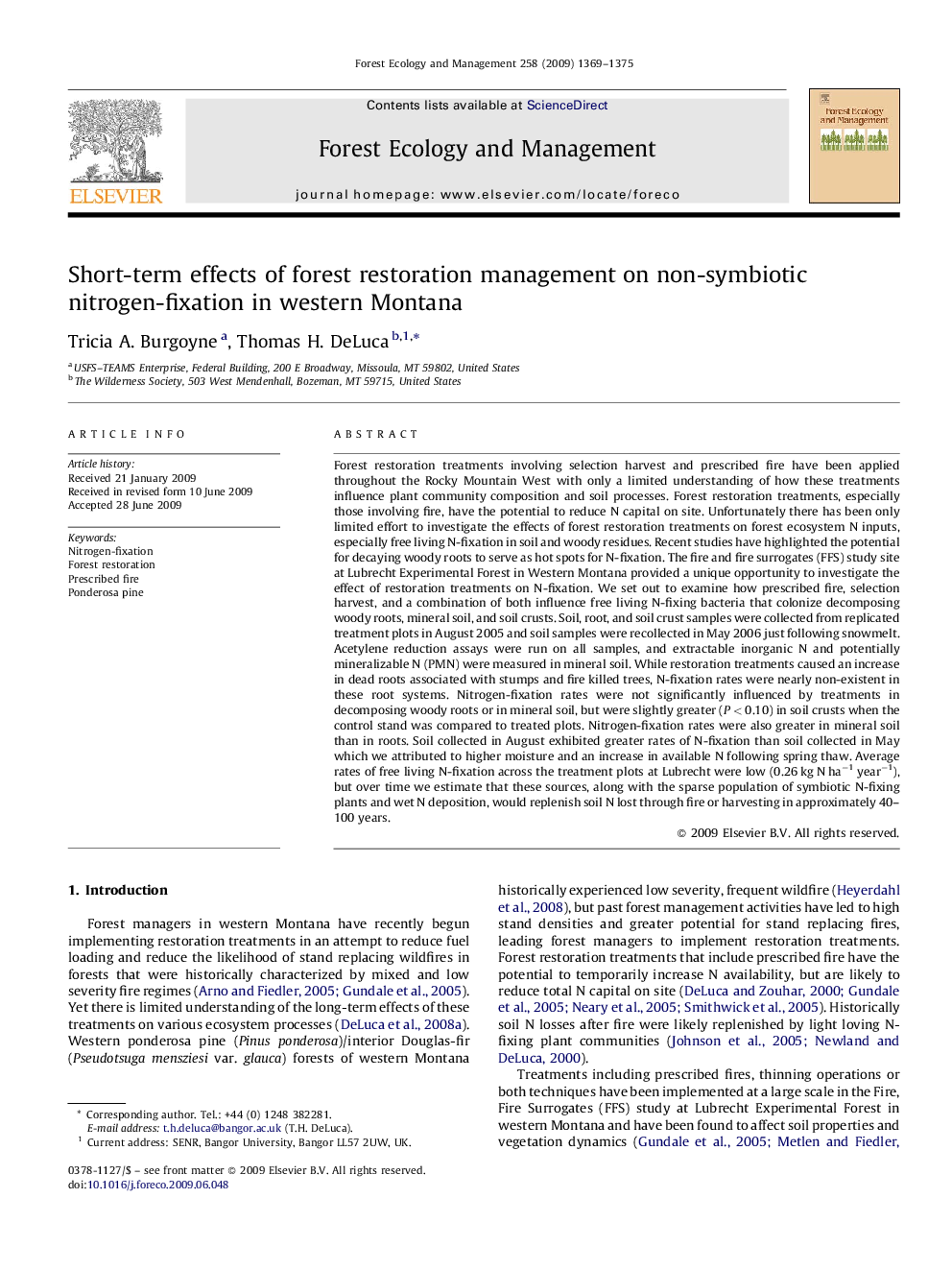| کد مقاله | کد نشریه | سال انتشار | مقاله انگلیسی | نسخه تمام متن |
|---|---|---|---|---|
| 88973 | 159328 | 2009 | 7 صفحه PDF | دانلود رایگان |

Forest restoration treatments involving selection harvest and prescribed fire have been applied throughout the Rocky Mountain West with only a limited understanding of how these treatments influence plant community composition and soil processes. Forest restoration treatments, especially those involving fire, have the potential to reduce N capital on site. Unfortunately there has been only limited effort to investigate the effects of forest restoration treatments on forest ecosystem N inputs, especially free living N-fixation in soil and woody residues. Recent studies have highlighted the potential for decaying woody roots to serve as hot spots for N-fixation. The fire and fire surrogates (FFS) study site at Lubrecht Experimental Forest in Western Montana provided a unique opportunity to investigate the effect of restoration treatments on N-fixation. We set out to examine how prescribed fire, selection harvest, and a combination of both influence free living N-fixing bacteria that colonize decomposing woody roots, mineral soil, and soil crusts. Soil, root, and soil crust samples were collected from replicated treatment plots in August 2005 and soil samples were recollected in May 2006 just following snowmelt. Acetylene reduction assays were run on all samples, and extractable inorganic N and potentially mineralizable N (PMN) were measured in mineral soil. While restoration treatments caused an increase in dead roots associated with stumps and fire killed trees, N-fixation rates were nearly non-existent in these root systems. Nitrogen-fixation rates were not significantly influenced by treatments in decomposing woody roots or in mineral soil, but were slightly greater (P < 0.10) in soil crusts when the control stand was compared to treated plots. Nitrogen-fixation rates were also greater in mineral soil than in roots. Soil collected in August exhibited greater rates of N-fixation than soil collected in May which we attributed to higher moisture and an increase in available N following spring thaw. Average rates of free living N-fixation across the treatment plots at Lubrecht were low (0.26 kg N ha−1 year−1), but over time we estimate that these sources, along with the sparse population of symbiotic N-fixing plants and wet N deposition, would replenish soil N lost through fire or harvesting in approximately 40–100 years.
Journal: Forest Ecology and Management - Volume 258, Issue 7, 15 September 2009, Pages 1369–1375